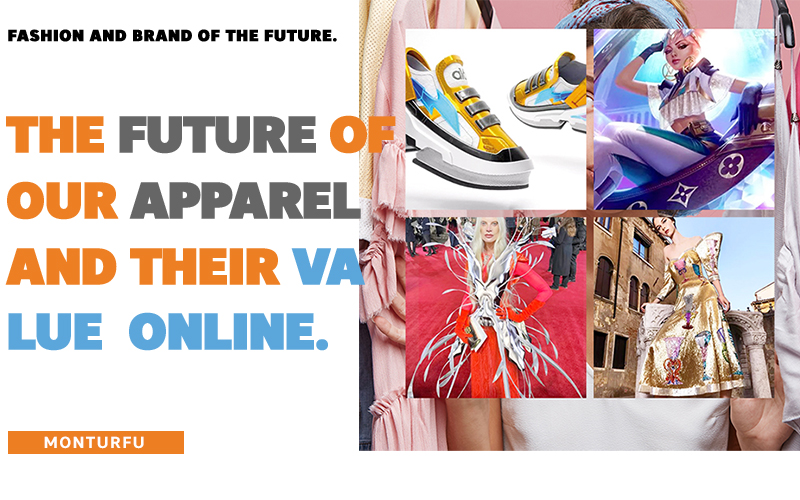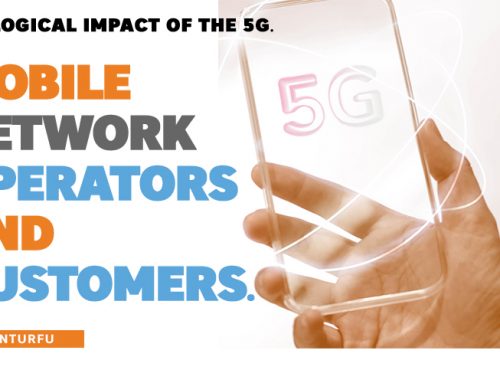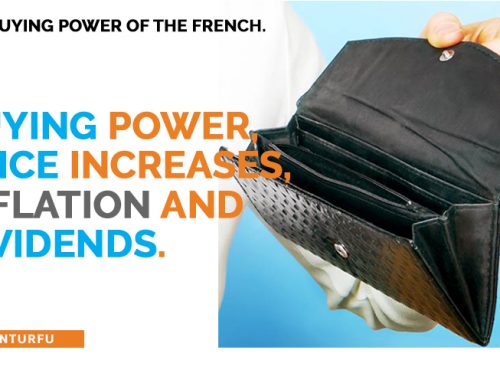FASHION AND BRAND’S FUTURE.
THE FUTURE OF OUR
APPAREL AND THEIR
VALUE ONLINE.
Today, consumers are increasingly demanding. They demand from fashion brands sustainability and transparency in their production processes. Moreover, the year 2022 confirms the irruption of virtual clothing and the growth of the second-hand sector in consumer habits. The health crisis is accelerating the changes in consumer habits. And the metaverse is becoming the center of attentions. Digital fashion with its Chief Metaverse Officer emerges.
Fashion and brand’s future, the second hand.
We cannot ignore this market that weighs 1.16 billion euros. In 2018, 16% of people were buying second hand, today this figure has risen to 29%. Says Alexandra Nervi, digital manager at Jacquemus.
Brands are redoubling their creativity and developing more and more original strategies to satisfy customer expectations. Because of course, the future of fashion is being prepared today. We are certainly moving towards a citizen and eco-responsible fashion.
Moreover, second hand pieces are a trend of ecological and sustainable consumption. They actually touch more and more people.
The number of players in the second-hand sector is increasing.
Vestiaire Collective is a forerunner in luxury second-hand fashion. And its valuation is at 1.7 billion dollars. It has more than 11 million active members worldwide has three million items with more than 550,000 new items put on sale per week. However, we can also mention Monogram, Zalando and Sandro.
Then Vinted claims more than 45 million members worldwide and has raised 250 million euros to expand into new countries.
And finally, a myriad of other players are present, namely, Isabel Marant Vintage, the 7e ciel of the Printemps group, C&A, H&M etc.
Fashion and brand’s future, digital fashion.
Brands can propose new creations, which can be bought online, to give virtual avatars a makeover. This is what brands like Republiqe, The Dematerialised, This Outfit Does Not Exist etc. are doing.
On the other hand, brands can also invest in metavers from video games via collaborations and propose immersive virtual experiences.
Thus Louis Vuitton is present in the game League of Legends since 2019. And Marc Jacobs in Animal Crossing since 2020. And at the end of 2021 Gucci is producing an immersive dance show, Le Bal de Paris, in collaboration with the choreographer Blanca Li.
Virtual clothing : digital as a tool for expansion.
Virtual clothing is developing with the rise of virtual reality, augmented reality and video games. In addition, the French spend 56 minutes a day playing video games. And according to the consulting firm Accenture, the sector will be worth more than $300 billion in revenue worldwide by 2021. This industry now weighs more than the film and music industries combined. As a result, brands are signaling their presence on these platforms. In this case in the video game Animal Crossing or even the collaboration of the luxury brand Balenciaga, with the online game Fortnite last September 2021.
Fashion and brand’s future, data companies in fashion.
Tagwalk, is a fashion search engine. It is the Google of fashion. Its algorithms track trends, accessories and fashion shows by keywords.
Lyst is dedicated to fashion. It is also a search engine that specializes in analyzing users’ searches. It lists more than 5 million items from 17,000 brands and stores worldwide.
Linkfluence applies AI, data science, and market research expertise to comb through the comments of social media users etc.
Fashion and brand’s future, algorithms.
Understanding user needs is increasingly about analyzing insights. According to Forbes, the world generates more than 2.5 billion billion bytes of digital data per day. This is how Spotify, Netflix or Steam analyze the tastes of their subscribers to make customer recommendations and refine their content strategy.
Meet users’ expectations.
Today, being as close as possible to consumer expectations also means being able to identify the demand and the product in the first place. Then having the resources to create, produce and distribute it in record time. Fast fashion brands rely on data to launch their products. They do not hesitate to collaborate to meet these technological challenges. Thus, fashion is opening up to this totally automated system, where data, artificial intelligence and robotics are combined.
Netflix meets the future of fashion.
In 2021, Netflix sets up the Netflix Shop and a business model with real product placements. Thus, at first, the mini-series Halston linked to a capsule collection generates on the brand’s website an increase of 3200% of traffic and +631% of e-commerce sales.
Then, with season 1 of the Bridgerton series in collaboration with Hill House Home, it’s the nap dress that finds a buyer as soon as 0.02 seconds of the broadcast.
Besides, since the health crisis, streaming platforms dominate theaters. And product placement finds its place in this Netflix model, which is carving out a place for itself in the fashion industry.
Fashion and brand’s future, the paradox of generation Z.
The 15–25 year olds, the Greta generation, have a paradox. They walk for the climate and shun plastic packaging. Moreover, they lecture about waste. They turn off the lights and close the taps. And yet they love very low budget products.
So the ultra-fast fashion giants are a hit with the very young. The natives of the early 2000s. This generation is addicted to the Shein brand. Because this Chinese giant puts online between 500 and 1000 new models per day.
Luxury brands.
Luxury brands are no longer exclusively aimed at a privileged clientele. They are increasingly targeting a wider audience in their communication. Because the main focus is on
- to precisely identify the customer profile,
- detecting weak and emerging signals,
- analyze the various campaigns,
- and thus anticipate societal trends.
Our algorithms learn from brain markers… The main questions for luxury brands are : who am I ? Who am I really talking to? Who is wearing my products and under what circumstances ? explains Élodie Nowinski, fashion sociologist and data analysis specialist.
Fashion and brand’s future, the mobilization of the actors of the sector.
Fashion is one of the most polluting industries in the world 1.2 billion tons of greenhouse gases emitted each year. Or some 11,000 liters of water to make a single pair of jeans.
Many brands are implementing all kinds of eco-responsible policies, from commitments to achieve carbon neutrality to a positive carbon footprint for the climate.
That’s why 130 brands, including Burberry, Chanel, and Kering, which owns Gucci among others, are signing the 2018 Fashion Industry Charter for Climate Action.
A new social media model.
Last October 28, 2021, Mark Zuckerberg announced that it is now the Metavers Meta that is the parent company of Facebook, Instagram, WhatsApp and Messenger. On the other hand, he plans to invest $10 billion a year in it. Meanwhile, Bloomberg estimates the market at $800 billion.
The act of buying in the metaverse.
In October 2021, a Dolce & Gabbana Glass Suit digital dress sells at auction on UNXD for over $1 million, a record. The nine pieces of the Collezione Genesi, two dresses, three jackets, a suit, two crowns and a tiara go for over $6 million. Buyers of the digital pieces can have a real, custom-made version made in the house’s Milanese workshops. With bonuses and privileges.
Fashion and brand’s future, the Nike-Adidas rivalry.
In December 2021, Nike announced its acquisition of the startup RTFKT, a specialist in the creation of virtual sneakers. In parallel, Adidas announces its collaboration with the collectibles Bored Apes. These are digital avatars to collect. Available in Ethereum cryptocurrency. The express sale totals more than 22 million dollars.
Ok de-MEDEIROS
SOURCES : https://www.lemonde.fr/campus/article/2022/03/01/ni-la-fast-fashion-ni-les-grandes-maisons-les-etudiants-en-mode-aspirent-au-renouveau_6115623_4401467.html, https://www.monsieurvintage.com/a-la-une/2022/03/la-mode-est-elle-vraiment-un-eternel-recommencement-51440, https://www.francetvinfo.fr/culture/mode/fashion-week/fashion-week-cfcl-le-label-japonais-tourne-vers-la-maille-prone-une-mode-durable_4987470.html, https://journalduluxe.fr/fr/mode/futur-netflix-mode, https://www.forbes.fr/lifestyle/le-passe-present-dans-la-mode-a-du-futur/, https://madame.lefigaro.fr/style/mode-et-luxe-les-algorithmes-vont-ils-remplacer-createurs-010419-164521, https://www.lesechos.fr/industrie-services/mode-luxe/environnement-pourquoi-les-acteurs-de-la-mode-proposent-leur-indicateur-1372282, https://www.lapresse.ca/societe/mode-et-beaute/2020-09-27/quel-avenir-pour-la-mode.php, https://www.mariefrance.fr/mode/good-news/a-quoi-ressemblera-la-mode-du-futur-lexpo-insolite-348222.html, https://www.mariefrance.fr/mode/tendances-mode/tendances-mode-2022-habilleront-toutes-selon-pinterest-582752.html#item=1, https://www.elle.fr/Mode/Les-news-mode/Ultra-fast-fashion-le-paradoxe-de-la-generation-Greta-3945195; https://fashionunited.fr/actualite/mode/best-of-2021-tout-savoir-sur-la-seconde-main/2021123028678, https://www.lefigaro.fr/industrie-mode/pourquoi-mon-ado-veut-sauver-la-planete-mais-surconsomme-la-fast-fashion-20210921
https://lareclame.fr/futur404-futur-mode-215336, https://www.vogue.fr/mode/article/cop26-industrie-mode-objectifs-climat, https://fr.freepik.com/photos/femme créé par wayhomestudio






Laisser un commentaire